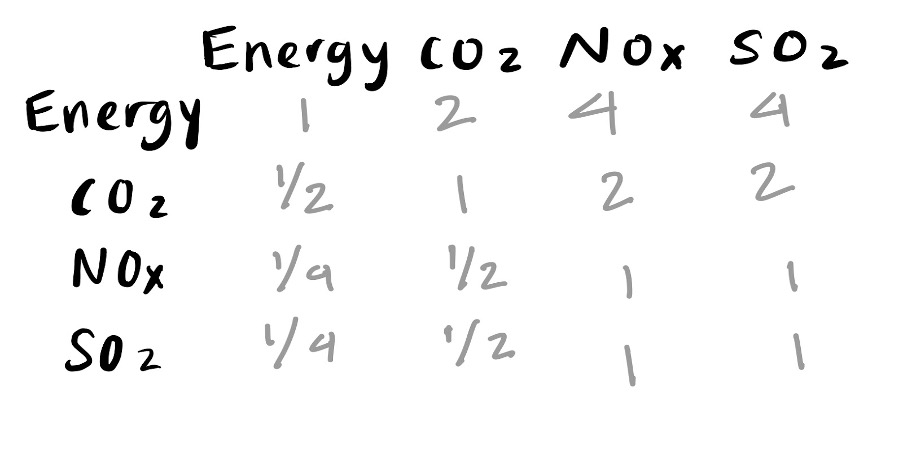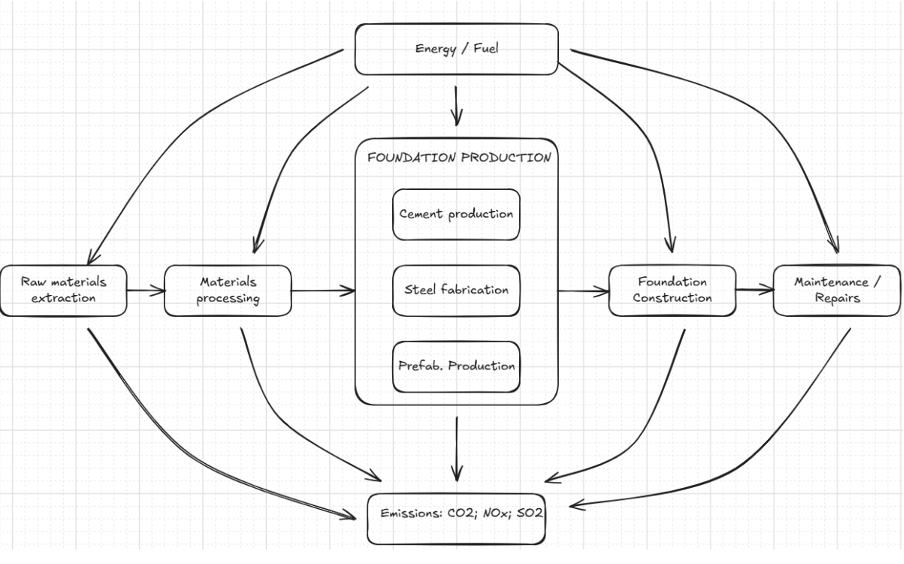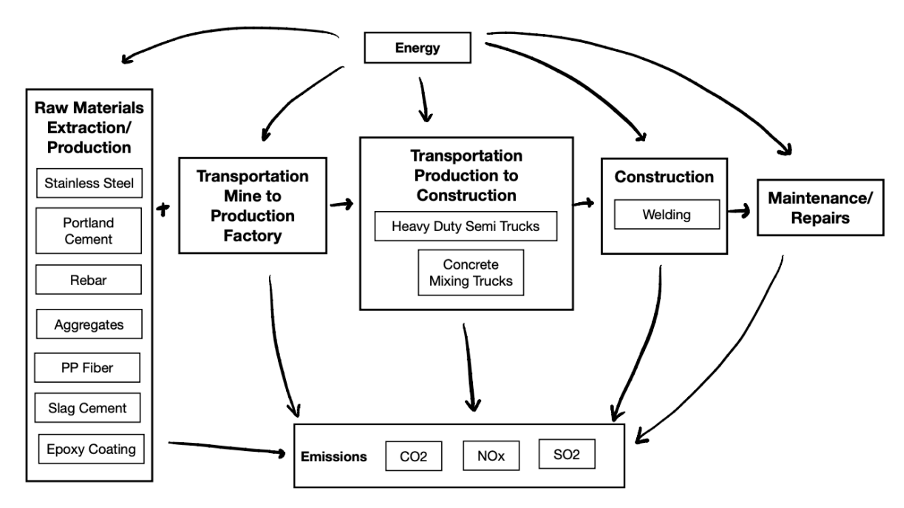Scope: The scope of this study is the action footprint of the dam/stellar tank/primary sedimentation tank/pipe system for implementation near a town. The LCA emissions were not geographically specified as for the dam/steel water tank/pipes and the primary sedimentation tank was specified to the USA, so one improvement to this study would be making all subsystems geographically-specific.
Boundary: The boundary was defined by combining the boundaries from our individual Project 2 boundaries. The boundary used for 3 subsystems (Dam/SteelTank/Pipes) is seen on the top and the boundary used for the primary sedimentation tank is seen on the bottom. Our integrated system used the bottom boundary because it was more general (due to the combined Raw Materials/Production stage). The emissions in all of our boundaries were chosen to be CO2, NOx, and SO2 because those were the most commonly reported emissions in most LCA cradle to gate studies.
Analytic Hierarchy Process (AHP): An AHP comparison matrix was created and all subsystem Project 2 codes were rerun to find the optimal solution with the new AHP matrix. For all state Project 2 code reruns with the new AHP matrix, the consistency index was 3.32e-16, which is well within the 0.10 consistency limit (Saaty, 1987) (Demir, 2024).
 Our AHP importance matrix was created based on the following reasoning: We used the Alps as an example, since there are many dam systems there. Energy was two more important than CO2 because materials are difficult to transport to locations in the Alps. NOx and SO2 were given low importance since Germany does not have environmental issues caused by NOx and SO2 (bad air quality, acid rain). Furthermore, the EU has strict regulations against NOx and SO2 production in material production, so these two emissions will automatically be low.
Our AHP importance matrix was created based on the following reasoning: We used the Alps as an example, since there are many dam systems there. Energy was two more important than CO2 because materials are difficult to transport to locations in the Alps. NOx and SO2 were given low importance since Germany does not have environmental issues caused by NOx and SO2 (bad air quality, acid rain). Furthermore, the EU has strict regulations against NOx and SO2 production in material production, so these two emissions will automatically be low.
Interventions:
The following was assumed about how much material is used during each subsystems interventions.
Dam: It is assumed that PR compared to other systems is more because you want the dam to not have interruptions as much due to letting all that water go. It is also important to maintain a high level because it would be catastrophic if a dam broke. PR = 20%, CR = 20%, Maintenance 5%.
Steel Tank: M = 5% (assumed less since it is not wastewater, but steel corrodes faster), PR = 5% (less than primary sedimentation tank). Coating redo replaces 100%.
Primary Sedimentation Tank: Maintenance = 5%, Redo Coating = 100%, Partial Replacement = 10%, Total Replacement = 100%
Pipes: Crack Pipe Repair= 10%, Joint Repair = 10%, Redo Coating = 100%, Total Repair Pipes = 100%
Emissions and Energy Consumption
Without optimizing our maintenance schedule with MultiObjective Analysis, the below are our energy, CO2, NOx, and SO2 values. By including Multi Objective analysis with the Pareto Front, we will be able to optimize the maintenance schedules and choose points on the Pareto Front that optimize sustainability.
References:
- Demir, A., Dinçer, A. E., Çiftçi, C., Gülçimen, S., Uzal, N., & Yılmaz, K. (2024). Wind farm site selection using GIS-based multicriteria analysis with Life cycle assessment integration. Earth Science Informatics, 17, 1591–1608. https://doi.org/10.1007/s12145-024-01227-4
- Saaty, T. L. (1987). The scaling of priorities for multiple criteria decision making. Mathematical Modeling, 9(3-5), 9 https://www.researchgate.net/publication/362349026_The_Analytic_Hierarchy_Process.


